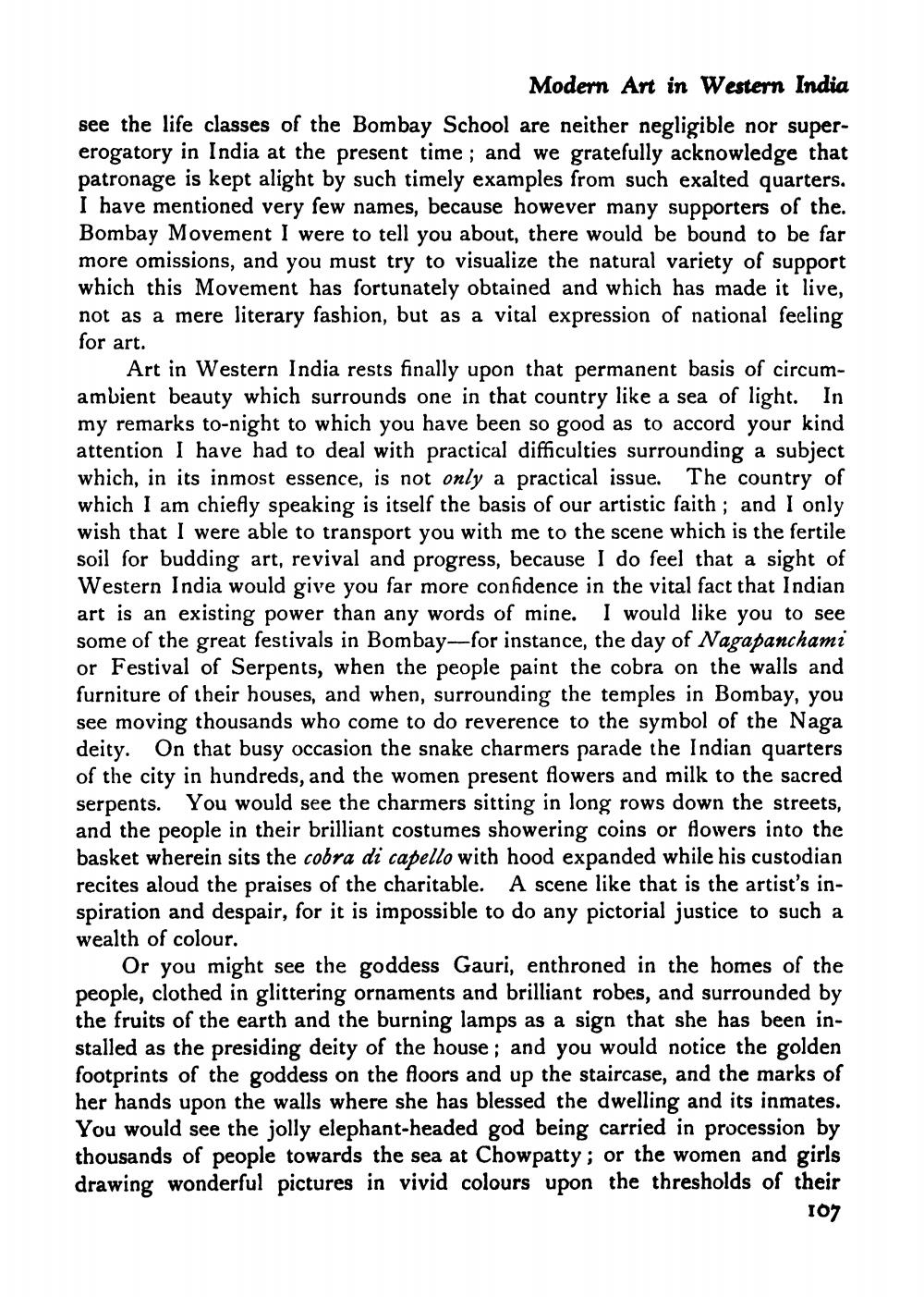________________
Modern Art in Western India see the life classes of the Bombay School are neither negligible nor supererogatory in India at the present time; and we gratefully acknowledge that patronage is kept alight by such timely examples from such exalted quarters. I have mentioned very few names, because however many supporters of the. Bombay Movement I were to tell you about, there would be bound to be far more omissions, and you must try to visualize the natural variety of support which this Movement has fortunately obtained and which has made it live, not as a mere literary fashion, but as a vital expression of national feeling for art.
Art in Western India rests finally upon that permanent basis of circumambient beauty which surrounds one in that country like a sea of light. In my remarks to-night to which you have been so good as to accord your kind
n I have had to deal with practical difficulties surrounding a subject which, in its inmost essence, is not only a practical issue. The country of which I am chiefly speaking is itself the basis of our artistic faith ; and I only wish that I were able to transport you with me to the scene which is the fertile soil for budding art, revival and progress, because I do feel that a sight of Western India would give you far more confidence in the vital fact that Indian art is an existing power than any words of mine. I would like you to see some of the great festivals in Bombay-for instance, the day of Nagapanchami or Festival of Serpents, when the people paint the cobra on the walls and furniture of their houses, and when, surrounding the temples in Bombay, you see moving thousands who come to do reverence to the symbol of the Naga deity. On that busy occasion the snake charmers parade the Indian quarters of the city in hundreds, and the women present flowers and milk to the sacred serpents. You would see the charmers sitting in long rows down the streets, and the people in their brilliant costumes showering coins or flowers into the basket wherein sits the cobra di capello with hood expanded while his custodian recites aloud the praises of the charitable. A scene like that is the artist's inspiration and despair, for it is impossible to do any pictorial justice to such a wealth of colour.
Or you might see the goddess Gauri, enthroned in the homes of the people, clothed in glittering ornaments and brilliant robes, and surrounded by the fruits of the earth and the burning lamps as a sign that she has been installed as the presiding deity of the house; and you would notice the golden footprints of the goddess on the floors and up the staircase, and the marks of her hands upon the walls where she has blessed the dwelling and its inmates. You would see the jolly elephant-headed god being carried in procession by thousands of people towards the sea at Chowpatty; or the women and girls drawing wonderful pictures in vivid colours upon the thresholds of their
107




